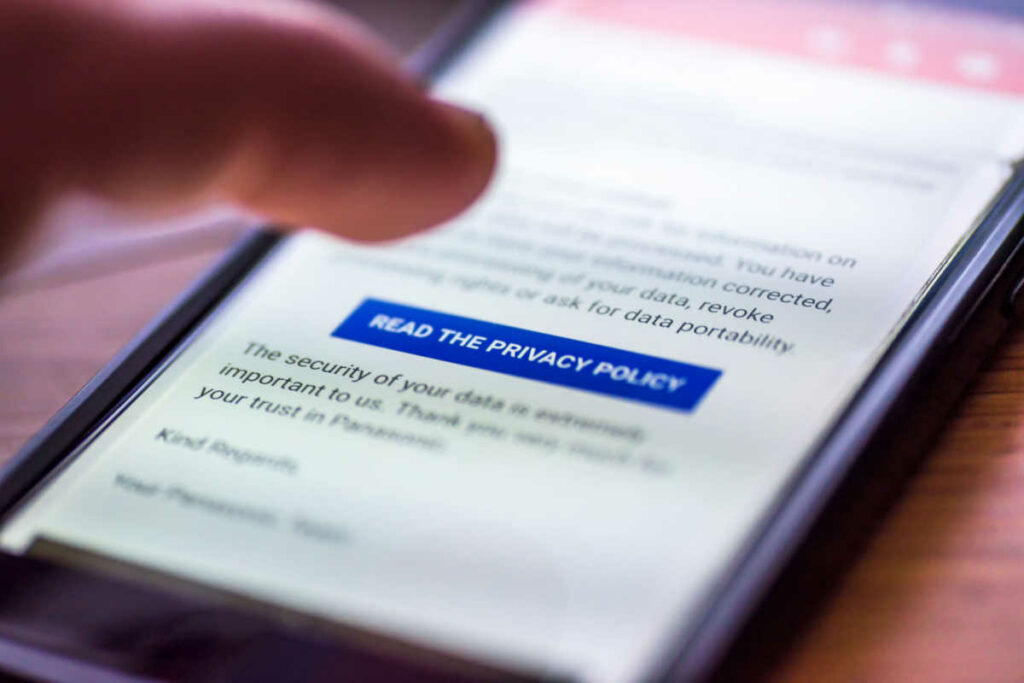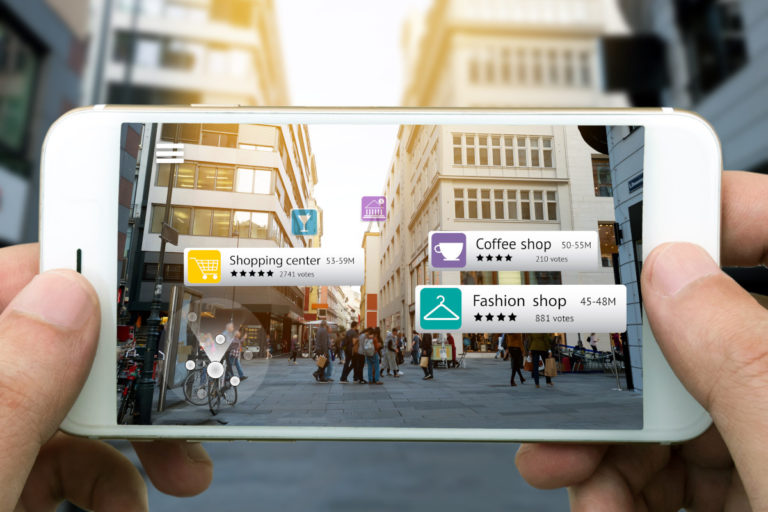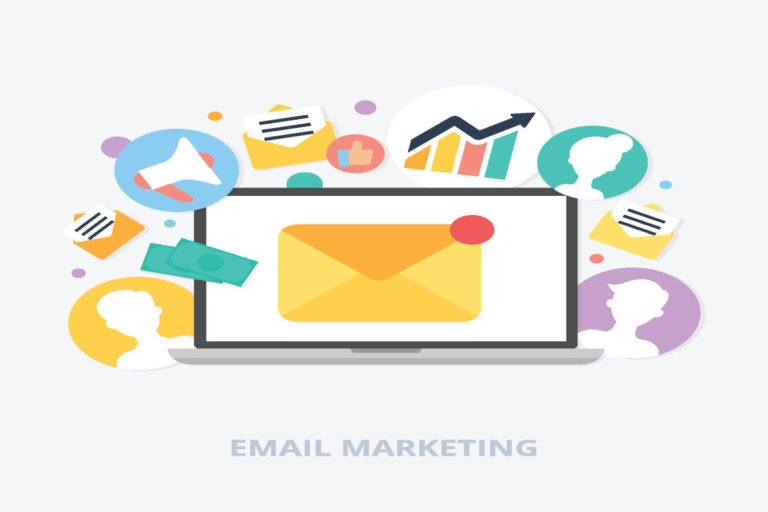If you’ve noticed you have been receiving local ads for companies and brands on social media, geofencing marketing is probably responsible for it. But what is geofencing marketing? Put simply, it’s a tool that allows businesses to build a virtual fence around specific locations using GPS technology. Then, once a potential customer enters that geofenced area, they are sent targeted ads by the business.
Let’s say you walk into the city and receive a notification from Starbucks offering you one of its new promotions. After looking at the ad, you might realize you could treat yourself to a coffee across the street. Geofencing offers plenty of benefits to businesses, but the primary perk is increased foot traffic. This blog will cover what is geofencing marketing and how your business can utilize this service.
What is Geofencing Marketing?
Geofencing marketing is a type of location-based marketing that connects with people’s smartphones in a given geographic area (fence) to promote specific products and services. For example, companies use geofencing to send personalized content to potential customers if they are close to the business’s physical stores.

Around 95% of U.S. smartphone users have social media installed on their phones, which makes mobile apps a powerful marketing tool. Many people also spend a lot of time on their phones, which opens a door for businesses to increase engagement. Let’s say a customer is 200 feet away from your store. If you have set up your geofence, they get pulled into your audience. Then, your company sends advertising material to the customer’s phone through push notifications, in-app ads, or search or display ads. The customer will notice that your store is in her vicinity and may choose to walk into your store.
What Technologies Does Geofencing Marketing Use?
As an example of location-based marketing, geofencing works with several technologies. Geofencing uses the global positioning system (GPS) and radio frequency identification (RFID) system to build the geofence – a boundary around the store that recognizes devices crossing it.
To make sure that geofencing advertising works accurately, it uses a combination of GPS, Wi-Fi, and cellular data. It works best when the Wi-Fi and GPS services are turned on on the user’s phone.
Benefits of Geofencing Marketing
Now that you know what geofencing marketing is, you have probably guessed that it allows businesses to grow and expand their customer base. Here are some of the most prominent benefits of implementing geofencing advertising:
Improve Local Marketing
According to a study by QSR magazine, integrating a geofence has helped restaurants increase their walk-ins by 20% and breakfast sales by 26%. Furthermore, targeting a given neighborhood can attract local traffic for new businesses and help them establish their customer base. Additionally, if the area is usually crowded or located in a tourist area, this strategy can help newcomers become familiar with local businesses.
Increase Shopper Loyalty
Attracting new customers is usually five times more expensive than retaining existing ones. By using geofencing advertising along with excellent customer service, you can turn one-time buyers into regular and loyal customers.

Let’s say a customer purchased an item from you once but either forgot or didn’t have the need to return. When they step into your geofence, it’s a great opportunity to remind them about your store through mobile ads.
Optimize Data and Analytics
Geofencing provides real-time data that can help you improve your campaigns and increase sales. Two measures you can extract are:
- Ad impressions or views
- Conversion zone visits
By analyzing this data, you can easily measure your performance and see if your current campaigns are not working well. For example, you may be targeting a passive geographical area.
Get Data on Consumer Behavior
Location-based marketing strategies help collect data needed to perform consumer behavior analysis. For example, you can track the amount of time spent in a store or the types of buyers that frequent the business. These interesting customer insights can later aid you in preparing tailor-made marketing strategies for your target audience.
Improve User Engagement
Based on the data you collect, you can modify your ads or change your fence to increase your user engagement. For example, if your ad for a free sample wasn’t working, you can change your ad copy to offer $10 vouchers. Additionally, you can identify which strategies are most effective by trying out different ads and areas and comparing your generated leads.
Boost Brand Awareness
Most customers usually don’t notice a particular store when passing by if they are unfamiliar with it. Geofencing can help attract shoppers’ attention and bring more recognition to your brand. After seeing your shop’s name on their feeds once or twice, the customer is more likely to notice your store when passing by and even be interested in walking in.
Boost Foot Traffic
Similar to boosting website traffic, you can use geofencing for Google ads. It helps increase your store’s foot traffic.

This is because potential buyers that are already in the vicinity of your store will more likely come into your store than the ones farther away.
Target Competitors’ Customers
Geofencing google ads also lets you build fences around your competitor’s stores. If your competitor’s location is close to yours, you can attract its shoppers by extending your store’s geofence near their space and sending promotional content to their customers.
Who Uses Geofencing Marketing?
Companies from various industries use geofencing advertising to boost consumer engagement and drive foot traffic to their stores. Here are some real-life examples of businesses implementing this practice in their marketing strategies:
Sephora
The makeup giant utilizes a smart location-based marketing strategy. For example, if a user has an unspent gift card, the store’s app sends a reminder to the user’s phone when they enter Sephora’s geofenced zone. Through this strategy, the company continuously increases its customer base and loyalty.
Starbucks
Starbucks sends personalized push notifications to their customers’ phones when they are near any of their locations. The famous coffeehouse usually sends new products and deals. Moreover, if the customer typically orders an Americano, the company may send a notification inviting them to have their regular. Geofencing helps Starbucks increase its foot traffic and build closer relationships with its customers.
Euroleague Basketball (EB)
One of the biggest sports and entertainment companies in the world, EB, manages and organizes the largest basketball competitions in Europe. The company sends information about its events and its sponsors’ marketing campaigns based on the user’s location. As a result of geofencing marketing, Euroleague Basketball has increased its revenue and fan engagement.
How Much Does Geofencing Cost?
The cost of implementing geofencing technology may differ based on how much you want to pay for ads and the number of geofences you want to establish.
If you’re targeting keywords, general keywords will typically cost you more than specific and long-tail ones. Normally, you can expect to pay anything from $1,000 to $30,000 on ad costs per month. Campaign management services can cost anywhere from $250 to $1,500 monthly. These fees usually include the services of an account manager that ensures your campaign stays engaging, such as suggesting design changes or refining targeting and scheduling.

Keep in mind that the price will increase if you have several locations. For instance, if you have three stores and you want to build geofencing zones around each location, you will pay three times more. In addition, utilizing other social platforms may also come with their respective fees. For example, Snapchat charges $5 for targeting 20,000 square feet.
How to Integrate Geofencing into Your Marketing Strategy
Once the geofencing system is ready, setting up the marketing campaign is not so cumbersome. The three simple steps are as follows:
- Set up the geographic area you want to target and identify its boundaries
- Launch personalized notifications when a user enters the zone with their smartphone connected to Wi-Fi or cellular data
- Use CRM software and location analytics reports to measure customer retention and campaign effectiveness
Geofencing Marketing Ethical Considerations
In this article, we learned what geofencing marketing is. However, there’s still one more topic to cover, and it concerns whether geofencing is ethical or not.
The main touchpoint here is privacy. Many customers are becoming increasingly aware of privacy issues, in turn starting to worry about protecting their personal data. While location-based data collection is typically anonymized, location information is still personal. The fact that companies track customers’ phones may be disturbing to some of them, as they may worry about the privacy of their browsing history and personal content.

However, more than 80 countries have adopted digital privacy regulations, including the California Consumer Privacy Act (CCPA) and the General Data Protection Regulation (GDPR). These consumer rights policies institute strict regulations on personal data collection. For instance:
- Consumers can ask what information the company wants to collect about them
- Consumers can agree or disagree to share their data with the company
- Businesses must use consumer data only for business purposes
Another factor about ethical considerations includes stepping over your competitors. One of the most famous cases of successfully using geofencing marketing was Burger King stealing McDonald’s customers. Burger King used to send everyone who moved inside a 600-foot geofence of a McDonald’s location online alerts to buy Whoppers for one cent from Burger King instead. It also gave users directions on how to get there. The campaign turned out to be a huge success for Burger King and improved retention rates drastically.
But how ethical was setting up a geofence around a competitor’s branch? What could McDonald’s have done to protect its area from competitors? Could they have sued Burger King? Unfortunately, these are all questions that are still not answered.
Conclusion
In a nutshell, geofence marketing is a strategy that lets businesses attract nearby customers to their physical locations. This tool uses basic GPS and RFID technology to find shoppers nearby and send advertising material to their cell phones. Companies worldwide are embracing geo-targeted ads to increase their retention rates and generate higher traffic to their stores.


